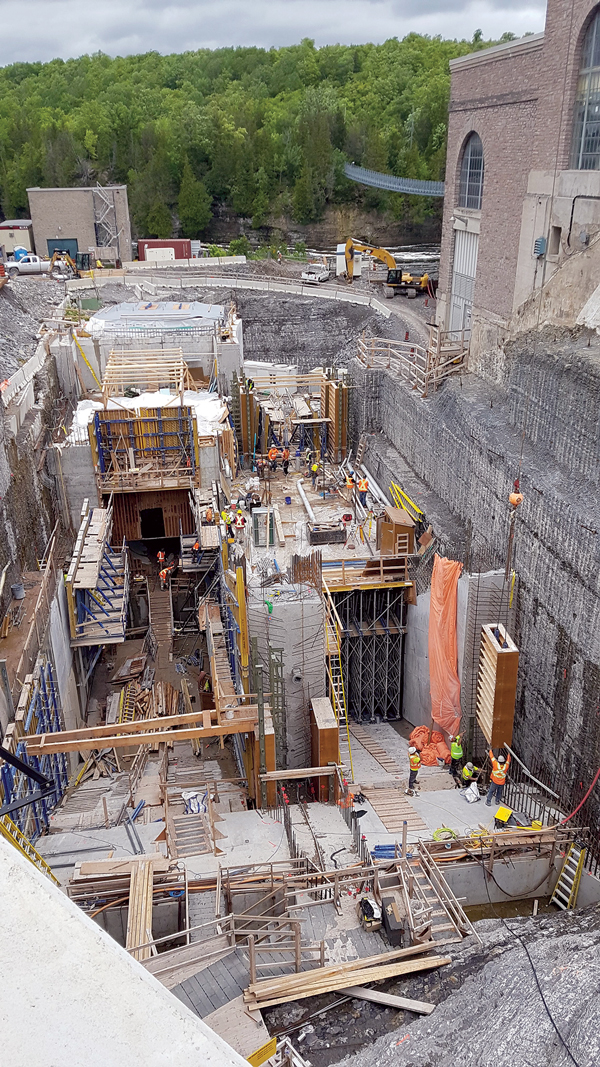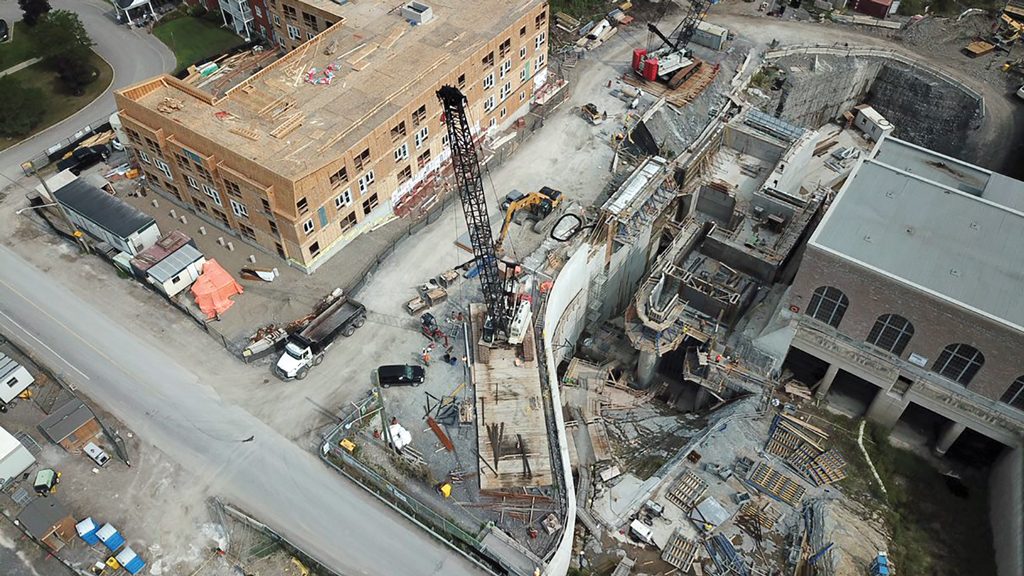The historic, century-old Ranney Falls Generating Station, a hydroelectric station on the Trent River in Campbellford, Ont., is undergoing a refurbishment in order to double the station’s capacity.
Ontario Power Generation (OPG) is expanding and upgrading the station with construction of a new powerhouse and a 10-megawatt hydroelectric generating unit which will replace the smallest generator on the property, an 0.8 megawatt unit from 1926. Once complete, the station’s capacity will go from 10 to 20 megawatts, which will generate enough electricity for up to 10,000 homes.
“The project is replacing the existing unit that has reached its end of life,” explained Iskander Boulos, a project manager with OPG, adding the unit is in a separate building and is referred to as “The Pup.”
“We cannot upgrade it so we’re replacing this unit with new technology.”

The powerhouse is being constructed beside the existing powerhouse building which houses two original units that were commissioned in 1922, each 4.8 megawatts. The project includes the expansion of the existing forebay and tailrace channel and construction of a spillway tunnel. It also includes construction of a new substation to connect with the Hydro One Networks Inc. distribution line onsite. The project is expected to inject $25 million in the local economy.
Construction began in March 2017 with excavation and is expected to be complete by this fall.
“The first step was the rock excavation to 30 metres below the surface,” explained Boulos. “About 30,000 cubic metres of rock was excavated. After that we started the foundation for the structure. Construction continued during the summer and winter in order to meet the scheduled timeline.”
“Our excavation method was hoe-ramming, mechanical excavation — no blasting because we were adjacent to a 100-year-old structure of the existing powerhouse,” explained Andrew Masotti, a project manager for GDB Constructeurs, the civil/general contractor on the project.
Following excavation, the team began the concrete formwork for the station. The dam required 170 concrete placements over a year-and-a-half, Masotti said.
“Our formwork was a combination of a traditional stick frame formwork as well as Doka Canada supplied engineered formwork systems including climbing formwork, shoring and custom built panels for curved surfaces,” Masotti stated.
“There is a lot of tricky geometry there and Doka constructed the formwork for that and gave us engineered designs. They preassembled the formwork, built the sections in its facility in Bolton, Ont. and then we assembled them onsite.
“Traditional lumber formwork systems were also heavily utilized onsite. Other major works include cofferdams and reconstruction of the forebay intake structure and switchyard.”
Crews are currently completing the civil works and preparing for the delivery of the new equipment for the station, which is expected in a few weeks, following final testing and inspection.
“We’ve watered up the tailrace and are currently removing the tailrace cofferdam and rock plug,” said Masotti. “We are preparing to water up the forebay, so what this means is that the dam structure will be mostly submerged soon.”
While construction started in 2017, environmental assessments began four years prior. The first consultations with federal and provincial agencies began in 2012. There was also an issue with endangered species in the area that needed to be resolved before moving ahead.
“Permits and approvals had to be secured before we put shovels in the ground,” said Boulos. “It was more than just a regular, straightforward construction job.”
Heritage was also a factor. The existing generator, The Pup, will remain on the property and will not be demolished. The downstream face of the new powerhouse has masonry stone matching the existing powerhouse stone surface installed in 1922 to reflect the historic character of the building.
“We respected the heritage and culture of the area,” said Boulos. “We want to maintain the heritage of these buildings and the esthetic feel of the community.”
In addition to being in downtown Campbellford and on the river, the site is also metres away from a seniors residence.
“They were also working on a major addition to the seniors home during our construction,” said Masotti. “We had some challenges just with the amount of real estate we had to work with. Considering we’re right in downtown Campbellford, we have narrow lane bridges right adjacent to the job so access is difficult.”
Local contractors and suppliers were used when possible, Masotti noted.
The project team includes WSP (project designer/site inspection); ES Fox (structural steel); Doka Canada (formwork supplier); Harris Rebar (reinforcing steel); Alltrade Industrial (mechanical/electrical); GA Masonry (masonry); Fisher Wavy (concrete); Always Roofing (roofing); PA Miller (surveying/layout); DM Wills (temporary structures designer); Canmec (gate supplier/installer); Andritz (turbine (ECOBulb) supplier); Mecanique CNC (turbine installer); and Megapro (turbine electrical).












Recent Comments